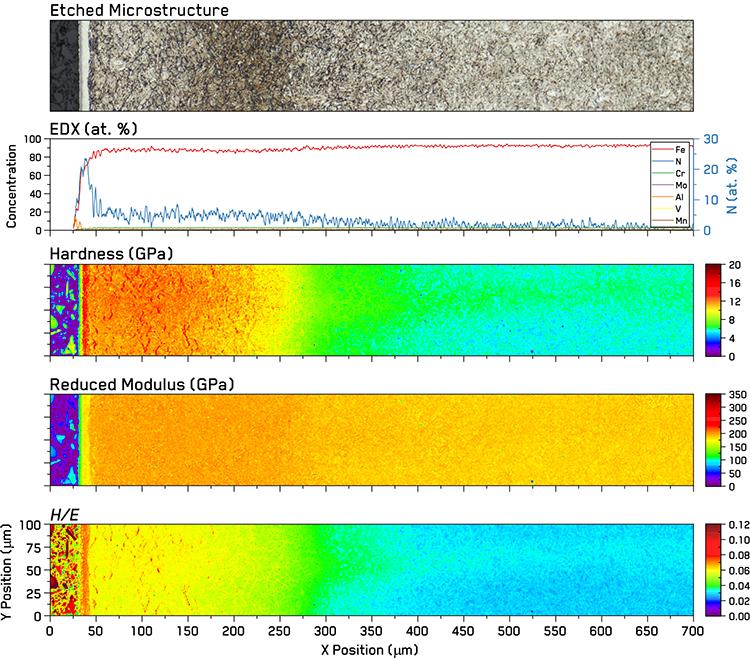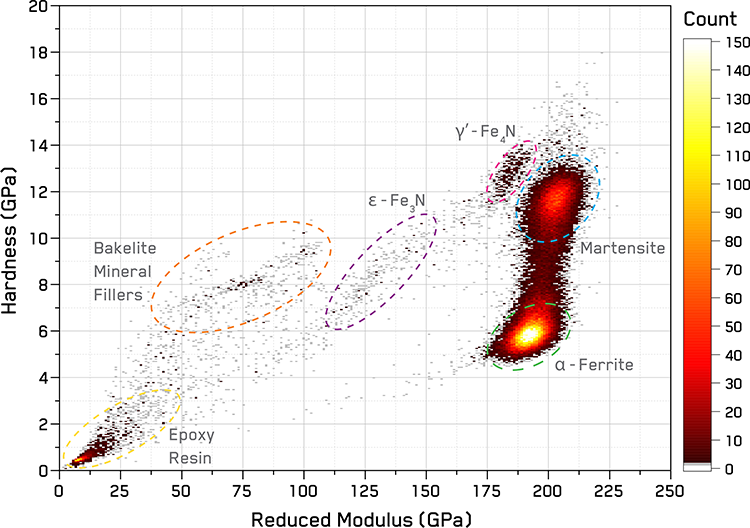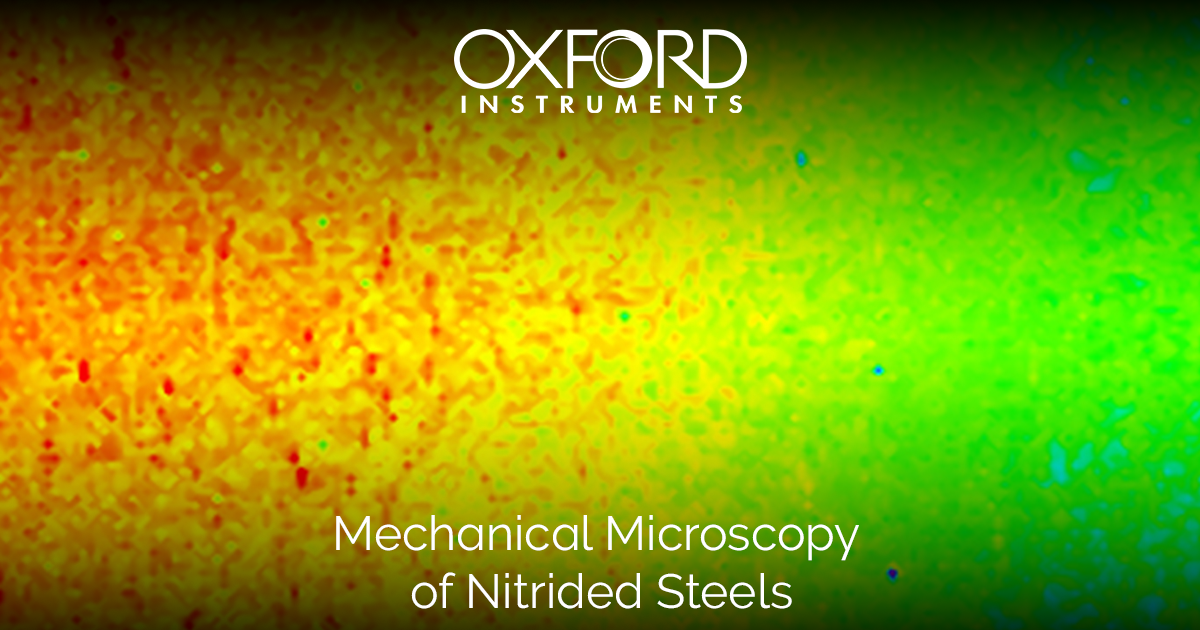Products
DEPOSITION TOOLSPlasma Enhanced Chemical Vapour Deposition (PECVD)Inductively Coupled Plasma Chemical Vapour Deposition (ICPCVD)Atomic Layer Deposition (ALD)Ion Beam Deposition (IBD)ETCH TOOLSInductively Coupled Plasma Etching (ICP RIE)Reactive Ion Etching (RIE)Deep Silicon Etching (DSiE)Atomic Layer Etching (ALE)Ion Beam Etching (IBE)
Learning


 Figure 1. Characterization of Nitrided 31CrMoV9 steel: Etched microstructure of a region of the steel adjacent to the mapped area (at the same scale as indentation maps), EDX concentration profiles of the indentation mapped region with Nitrogen concentration on the right axis, and indentation property maps of the nitride steel revealed two phases within the surface white layer and a gradient in mechanical properties.
Figure 1. Characterization of Nitrided 31CrMoV9 steel: Etched microstructure of a region of the steel adjacent to the mapped area (at the same scale as indentation maps), EDX concentration profiles of the indentation mapped region with Nitrogen concentration on the right axis, and indentation property maps of the nitride steel revealed two phases within the surface white layer and a gradient in mechanical properties. Figure 2. 2D histogram with clusters corresponding to various phases within the nitride steel and bakelite mounting labeled.
Figure 2. 2D histogram with clusters corresponding to various phases within the nitride steel and bakelite mounting labeled.